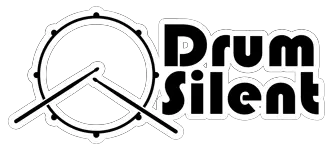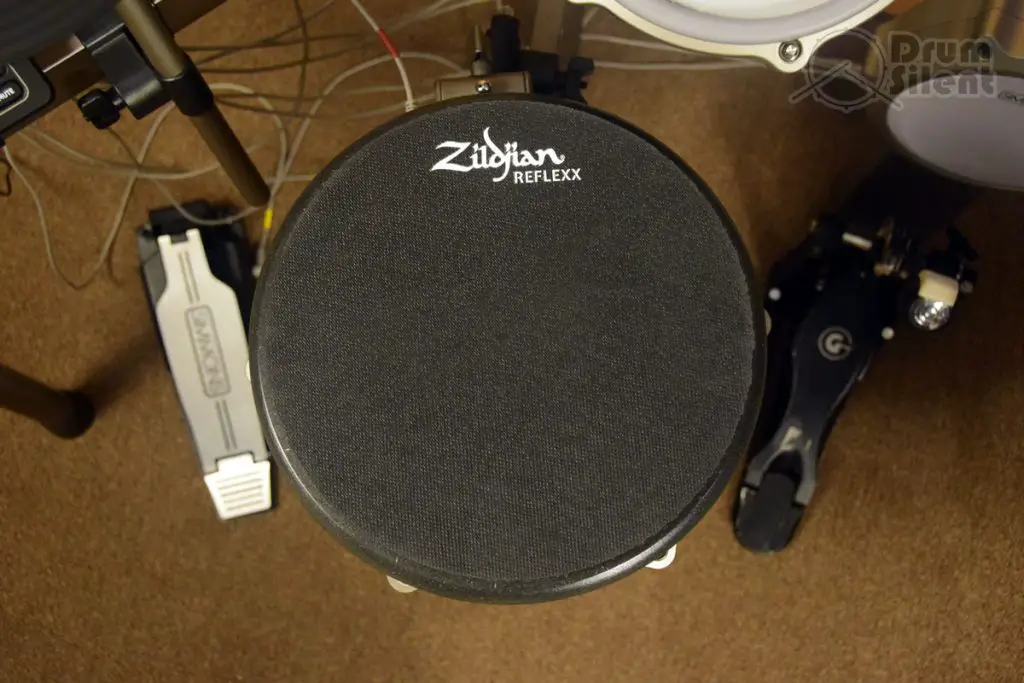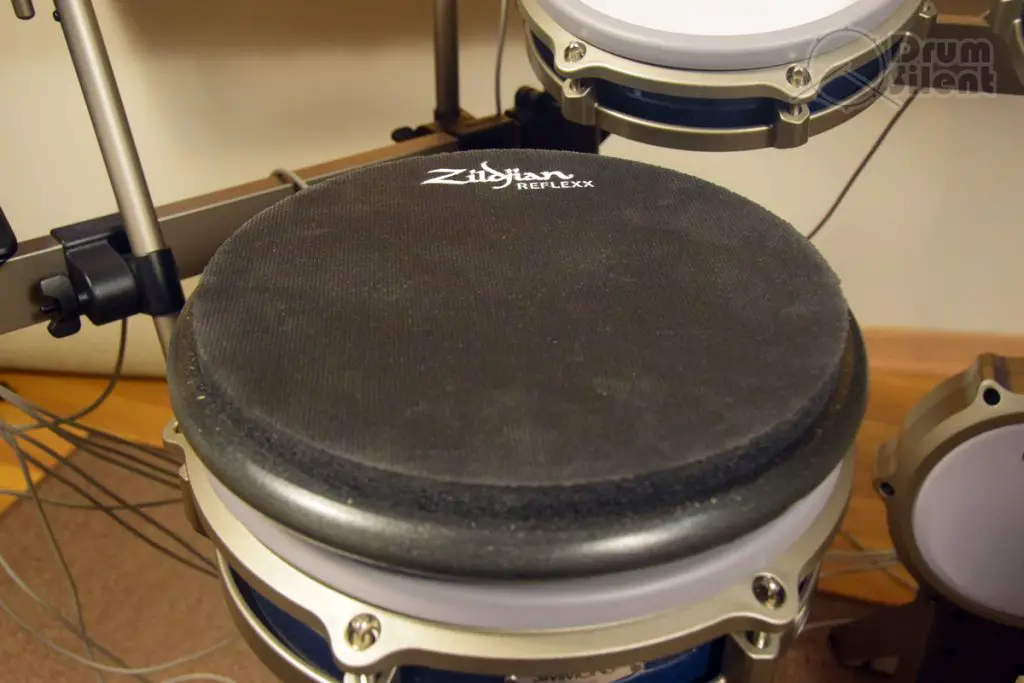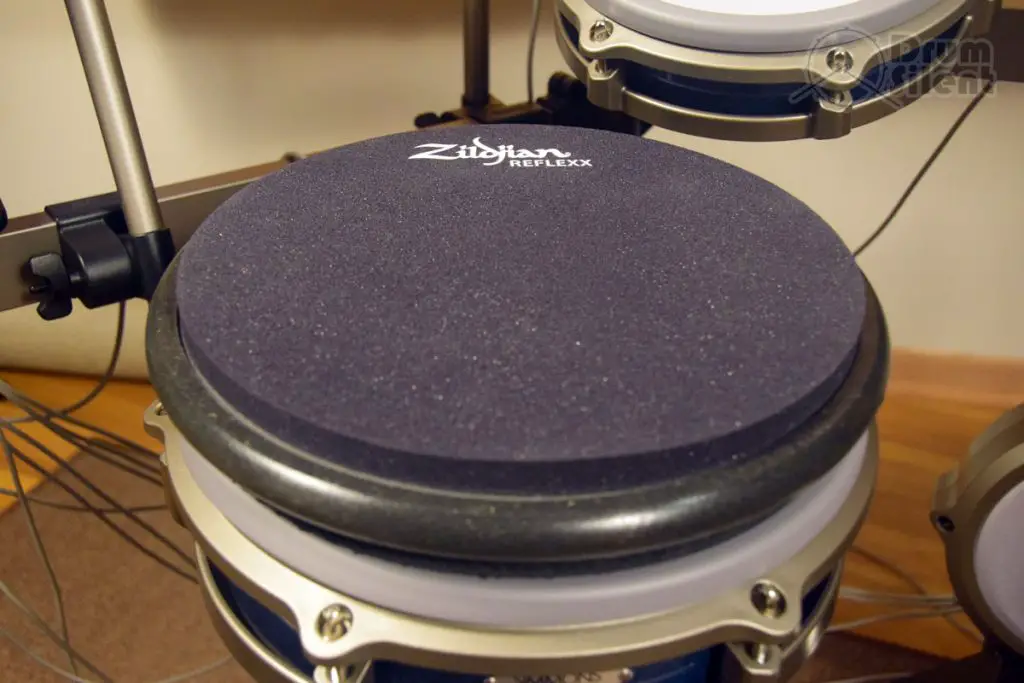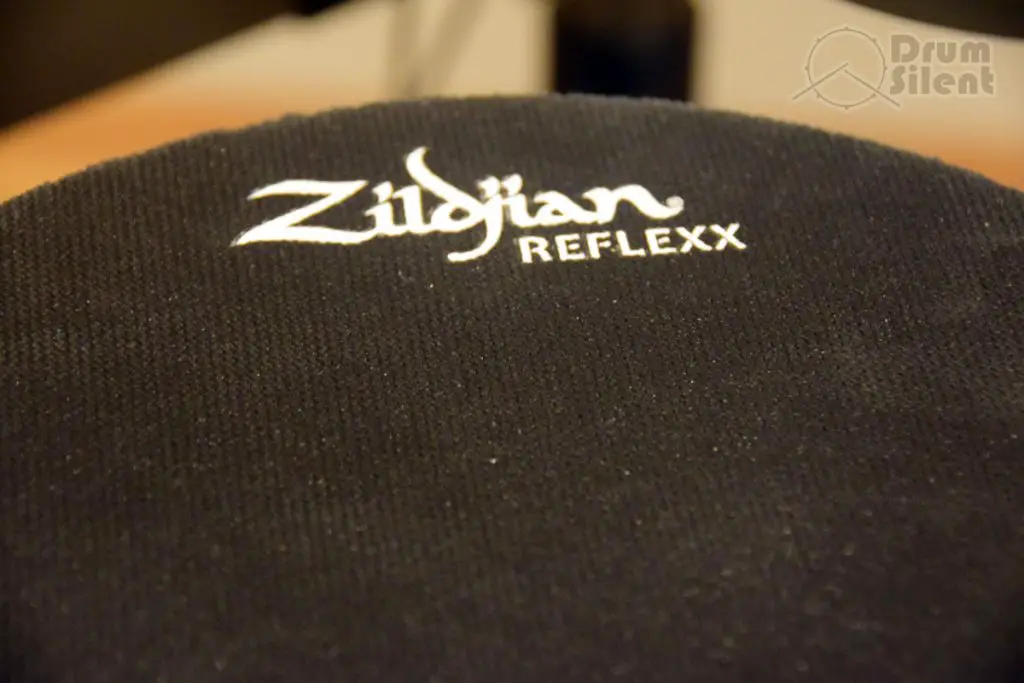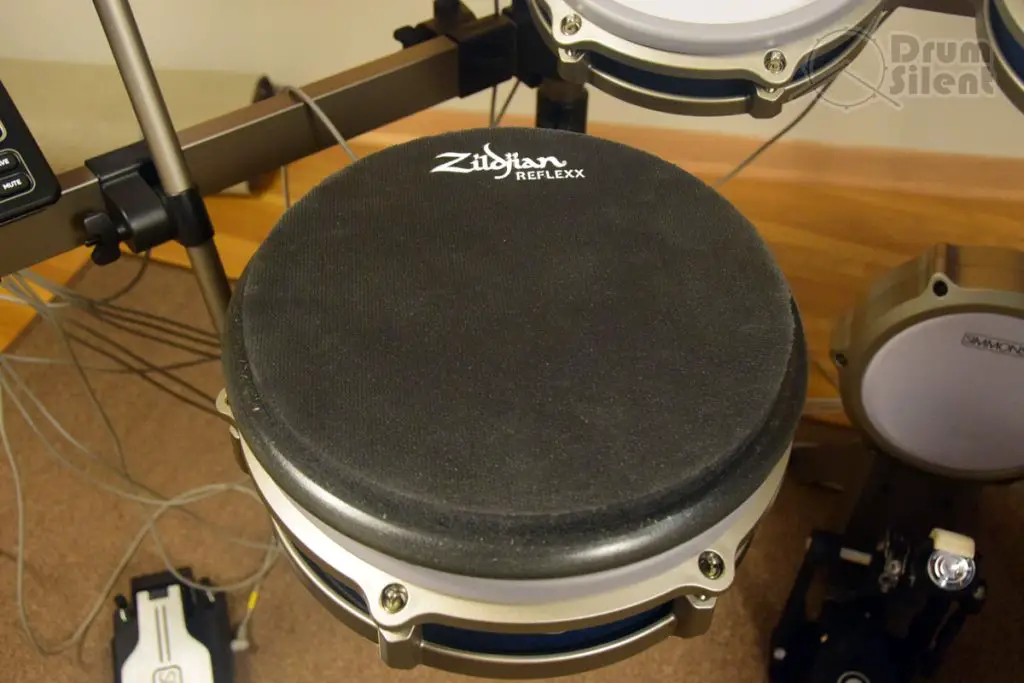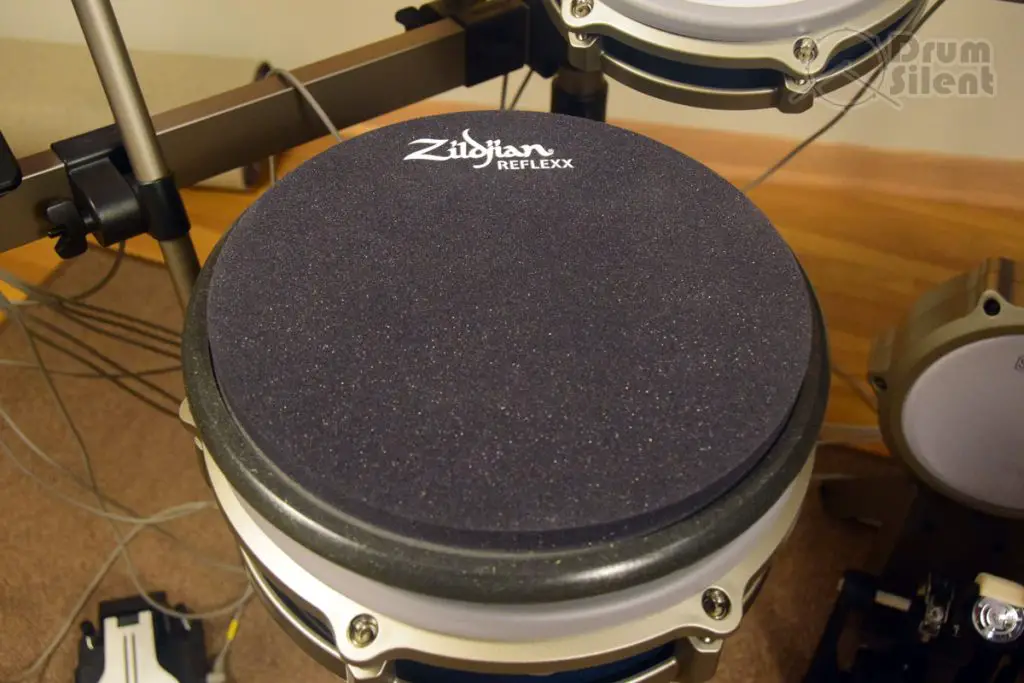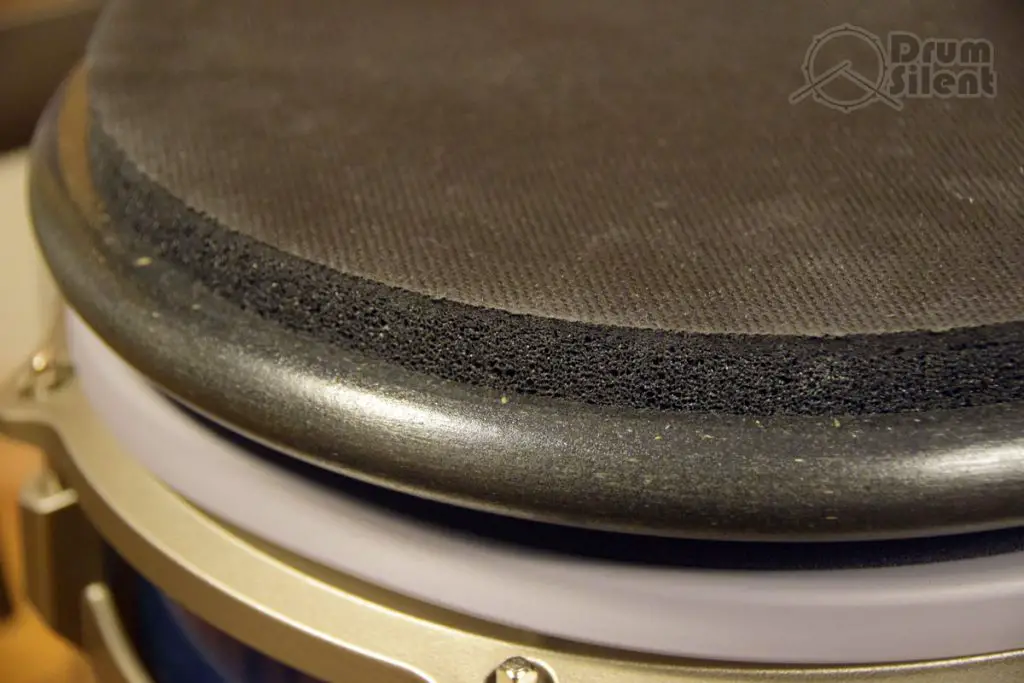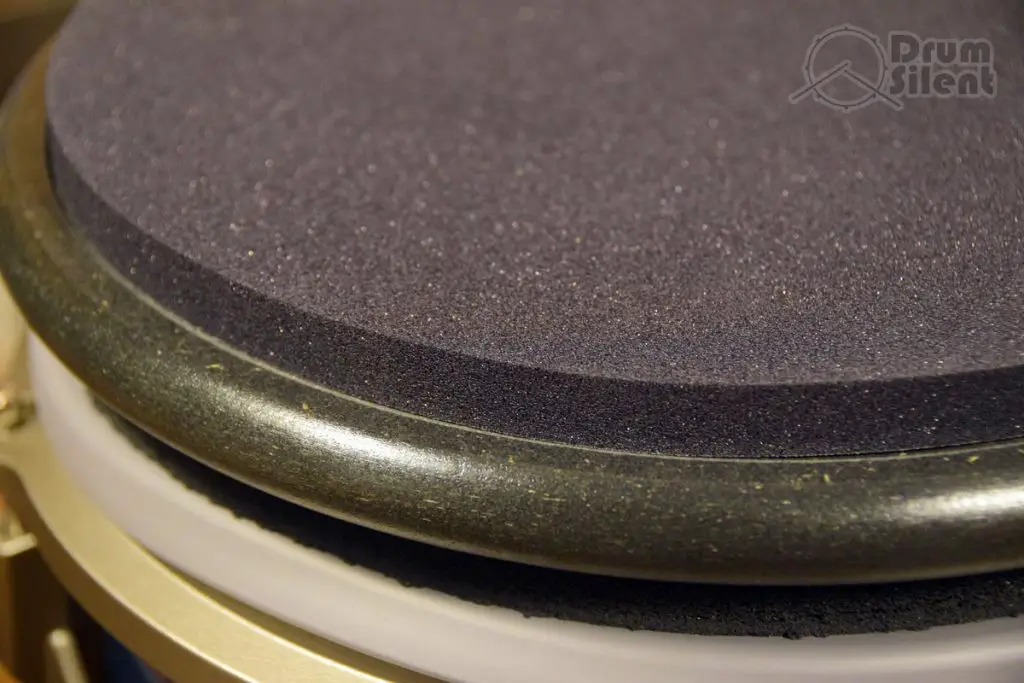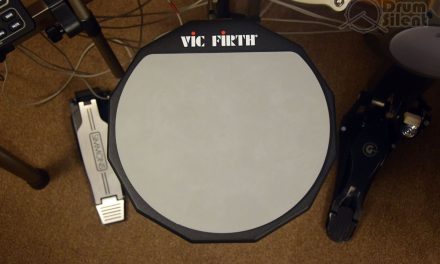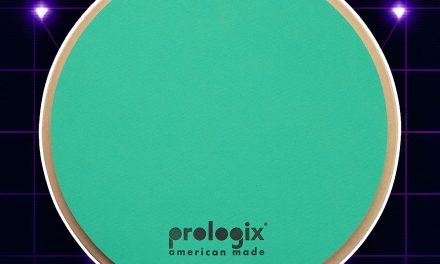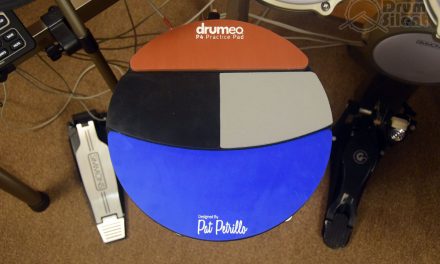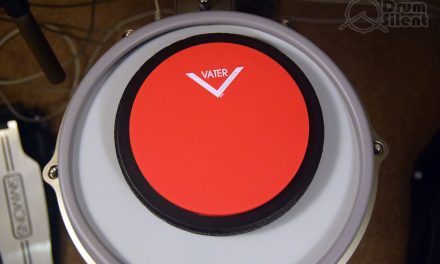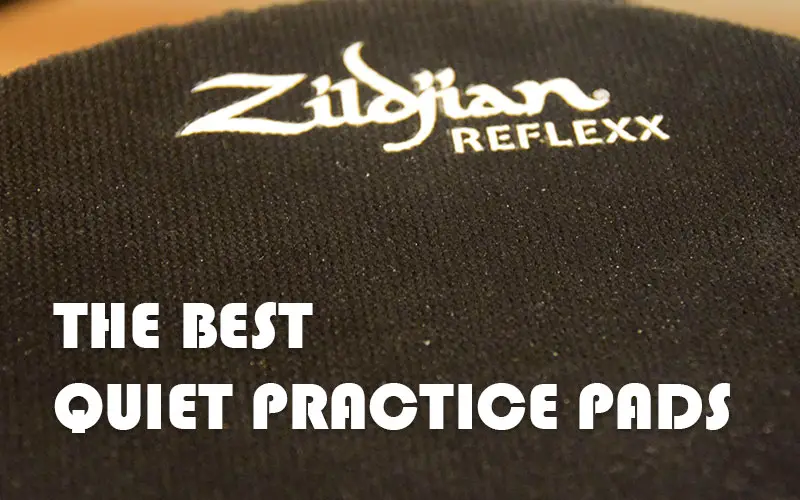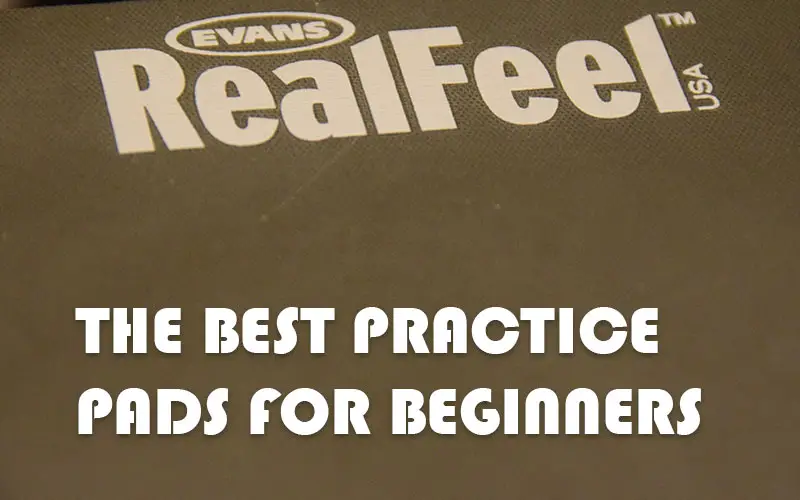The Zildjian Reflexx conditioning pad is designed to give you a little more of a workout than a high-rebound rubber pad. Even though it’s marketed as a pad for conditioning, it can work great as an everyday practice pad and is very quiet.
Feel and Playability
Zildjian calls the top layer the Reflexx layer and the bottom layer the Workk layer. The pad doesn’t say Workk anywhere on it though.
The top Reflexx pad is a thick, rubbery foam layer with a soft, textured rubber surface. It’s about 1/2 inch (1.27 cm) thick, so it’s much thicker than the pad on many other rubber-surfaced practice pads I’ve tried. The thicker, softer pad makes a for a softer feel that still has a good amount of rebound. To me it feels kind of like the tension and rebound of a low tom head. Playing rudiments and techniques such as rolls feels good on the top layer.
The bottom Workk pad is a foam layer that doesn’t feel rubbery like the top. It’s about 3/8 inch (.95 cm) thick. It’s a little softer to the touch, but it has much less rebound when played. It’s hard to do stuff like buzz rolls on the Workk layer. You’re forced to use more of your arm and wrist to keep the sticks moving due to the lack of rebound. At the same time, it remains very quiet. Most other practice pads have harder, noisier layers on the bottom for a conditioning workout, but this pad is different with it’s quiet conditioning pad.
I like how this pad plays. It has a softer feel for sure, but the top surface can work well for every day practice with how it responds. It does have a less stick definition that other harder rubber pads. However, even though this is pitched as a conditioning pad, I think it’s perfectly suitable for normal, regular use if you need a quiet practice pad.
How Loud Is The Zildjian Reflexx Practice Pad?
In my opinion, this is one of the more quiet practice pads available. It competes with the Sabian Quiet Tone and Remo Silentstroke practice pads for being the most quiet. The thick, porous playing surfaces help to keep the sound levels down on both sides while offering both a higher and lower rebound playing surface. Check out our sound demo to see the dB volume levels of this pad.
Portability and Design
I’m using the 10 inch version of this pad. It’s got a little bit of bulk to it while remaining portable. It fits in my backpack and doesn’t feel overly large like some 12 inch pads I’ve lugged around.
While the playing surface is 10 inches (25.4 cm) in diameter, the total width with the base is about 11 inches (27.94 cm). It’s a very thick practice pad at about 1-5/8 inches (4.13 cm) thick. It weighs about 2 lbs 9 oz (1.16 kg).
Durability
The top Reflexx layer looks like it’s mostly made from a porous, rubbery foam and then the top surface is a thinner, non-porous textured rubber layer. The Workk layer is more of a foam that doesn’t have the rubbery feel of the top pad. The base is a smooth, painted wooden base, and I like that it’s not rough like with some other pads.
Overall, this pad feels very well built and solidly constructed. The top pad feels very durable and I wouldn’t expect that to wear out. I do wonder how long the foam layer on the bottom would last with a lot of play over time, but mine has held up well so far.
Pros
- Two playing surfaces with higher and lower rebound
- Very quiet
- Smooth, painted wooden base
- Durable
- Available in multiple sizes and colors
Cons
- Doesn’t have super sharp stick definition like some harder rubber pads
The Verdict
The Zildjian Reflexx practice pad is a great option both as a conditioning pad or as a normal practice pad if you need to keep sound levels to a minimum.
It plays a little more softly but the top surface has good rebound for sticking techniques. The bottom surface is an excellent condition pad that works your wrist and arms more while remaining very quiet. It also comes in a smaller and larger size and has some different color options available. Overall this is an excellent practice pad and even though it’s a little more expensive it’s worth the money.
